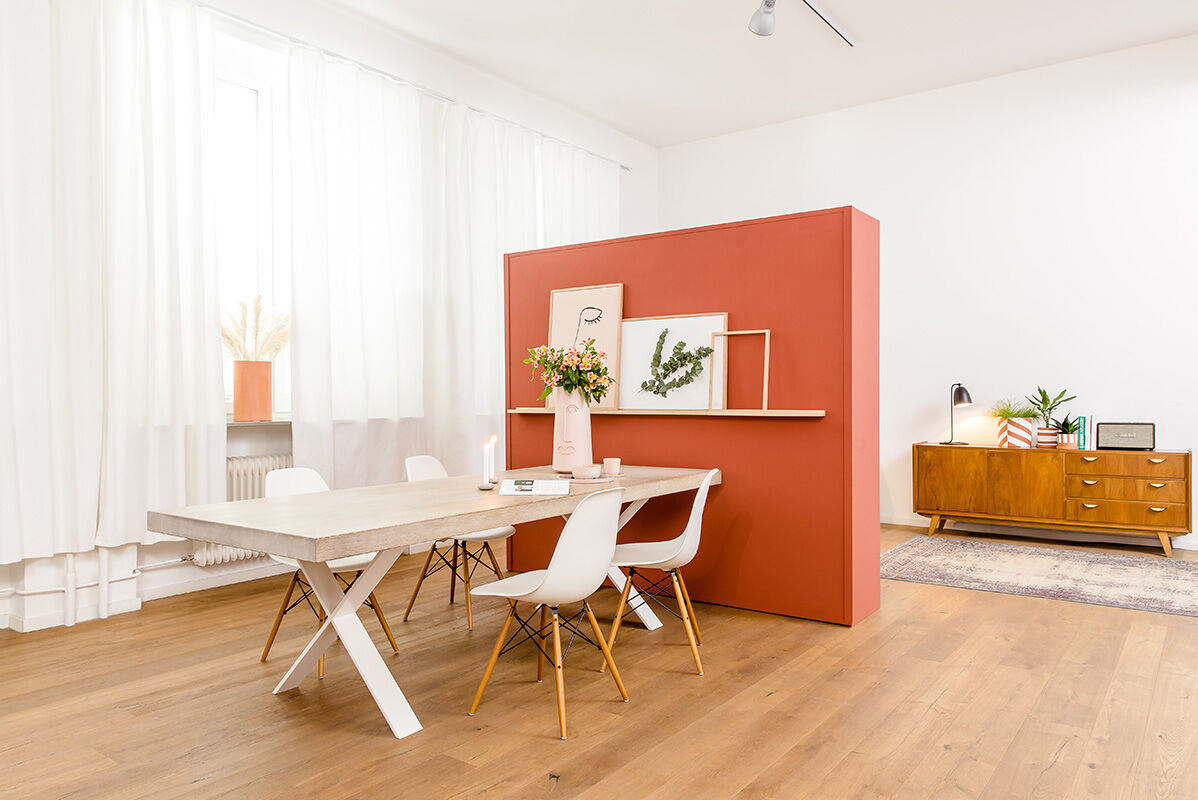Design your own room divider - instructions, tips and ideas for your home office
Working from home is currently experiencing an unprecedented boom. The new situation is posing a multitude of challenges to workers – from the technical equipment to virtual meetings, to the essential question of “Where should I actually work?” Not everyone has a separate room for their office, forcing many to work in their dining room, living room or kitchen. The lines between work life and personal life are blurring bit by bit and it is becomingly more and more difficult to close the laptop at night and then turn it off completely. A practical room divider doesn't just bring some order to the chaotic new work situation, it provides a dedicated area for mobile work and creates the perfect separation between work and personal life. Need some inspiration? Interior designer Eva Brenner shows how you can give both your home office and your dining room a modern, sophisticated look.










